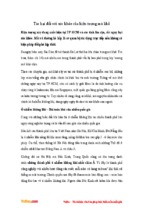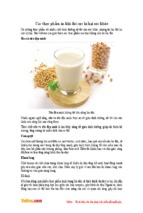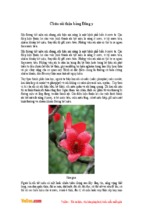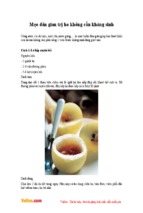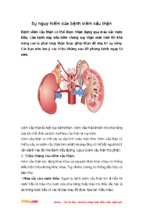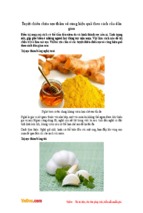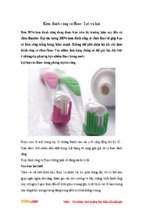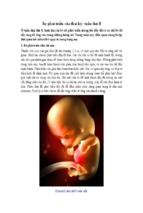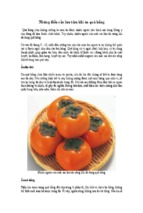Accessed from 128.83.63.20 by nEwp0rt1 on Fri Dec 02 21:08:38 EST 2011
Physical Tests / 〈698〉 Deliverable Volume 289
USP 35
Typically, this temperature change in an electronic form is
measured at precisely defined time intervals to produce
temperature–time data that are collected, analyzed by a
computer, and then plotted. A blank run without addition
of the solid solute to the solvent should show no discernible
change in the slope of the temperature–time plot.
For isoperibol solution calorimeters, response is relatively
rapid, but any heat losses to or heat gains from the bath
reduce the accuracy and contribute to noise. Therefore,
isoperibol solution calorimeters are more advantageous than
isothermal solution calorimeters when the solution process is
relatively fast. For all measurements of enthalpy of solution
using isoperibol solution calorimeters, the choice of solvent
and solid is critical. The nature and weight of the solvent
and the weight of the solid sample allow the total heat
change, corresponding to total dissolution of the solid, to
proceed to completion within 10 minutes under vigorous
stirring at a constant rotational speed within the range of
400 to 600 revolutions per minute. The rotational speed is
checked with a stroboscope.
Isothermal Solution Calorimetry
In the isothermal (constant temperature) solution calorimeter, the heat change during the solution process is compensated for by an equal but opposite energy change, such
that the temperature of the solvent–solute system (i.e., solution) remains constant. This equal but opposite energy
change is measured and, when its sign is reversed, provides
the enthalpy of solution. For isothermal calorimeters, response is relatively slow, but the compensation process
eliminates the effects of heat losses to or heat gains from
the bath. Therefore, isothermal calorimeters are more advantageous than isoperibol calorimetry when the solution
process is relatively slow.
CALORIMETER CALIBRATION
To ensure the accuracy of the calorimeter, chemical calibrations must be performed daily. For an endothermic solution process, the calibration of the calorimeter is checked by
measuring the heat absorbed during the dissolution of potassium chloride in distilled water at 298.15 K (25.0°). The
established enthalpy change in this endothermic process is
235.5 J/g or 4.196 kcal/mol. For an exothermic solution
process, the calorimeter is checked by measuring the heat
evolved during the dissolution of 5 g per L of tromethamine
[tris(hydroxymethyl)aminomethane, THAM] in a 0.1 mol/L
aqueous hydrochloric acid solution at 298.15 K (25.0°). The
established heat for the aforementioned process is –29.80
kJ/mol or –7.12 kcal/mol.
The effective heat capacity of the calorimeter cell and its
contents is determined for every calorimeter run. This determination is accomplished by electrical heating of the contents of the calorimeter cell. The effective heat capacity is
determined according to one of two protocols—either by
making one determination after ampul breakage or by making one determination before and a second determination
after ampul breakage and then averaging the two results.
The accuracy and reliability of the electrical heating are established by the accuracy and reliability of the aforementioned chemical calibrations.
SAMPLE HANDLING
The thermodynamic stability of solids decreases with decreasing crystallinity. In particular, solids of low crystallinity,
especially amorphous solids, tend to sorb water vapor from
the atmosphere, leading to crystallization and a corresponding gain in crystallinity. For these reasons, anhydrous solid
samples whose crystallinity is to be determined must be
stored at zero humidity in sealed chambers containing a
desiccant, preferably containing an indicator of effectiveness. If crystallinity–humidity studies are to be carried out,
the solid sample should be stored in a sealed chamber containing a saturated salt solution to provide a defined relative
humidity at 25.0 ± 0.1°.
〈698〉 DELIVERABLE VOLUME
The following tests are designed to provide assurance that
oral liquids will, when transferred from the original container, deliver the volume of dosage form that is declared
on the label of the article. These tests are applicable to
products labeled to contain not more than 250 mL, whether
supplied as liquid preparations or liquid preparations that
are constituted from solids upon the addition of a designated volume of a specific diluent. They are not required for
an article packaged in single-unit containers when the monograph includes the Uniformity of Dosage Units 〈905〉 test.
TEST PREPARATIONS
For the determination of deliverable volume, select not
fewer than 30 containers, and proceed as follows for the
dosage form designated.
Oral Solutions, Oral Suspensions, and Other Oral
Liquid Dosage Forms—Shake the contents of 10 containers
individually.
Powders that are Labeled to State the Volume of Oral
Liquid that Results when the Powder is Constituted with
the Volume of Diluent Stated in the Labeling—Constitute
10 containers with the volume of diluent stated in the labeling, accurately measured, and shake individually.
PROCEDURE
Being careful to avoid the formation of air bubbles, gently
pour the contents of each container into separate dry graduated cylinders of a rated capacity not exceeding two and a
half times the volume to be measured, and calibrated “to
contain”. Allow each container to drain for a period not to
exceed 30 minutes, for multiple-unit containers and 5
seconds for single-unit containers, unless otherwise specified
in the monograph. When free from air bubbles, measure the
volume of each mixture. Alternatively, in the case of products of low volume packaged in single-unit containers, the
volume can be computed as follows: (1) discharge the container contents into a suitable tared container (allowing
drainage for not more than 5 seconds); (2) determine the
weight of the contents; and (3) compute the volume after
determining the density.
ACCEPTANCE CRITERIA
Use the following criteria to determine compliance with
this test.
For Multiple-Unit Containers (see Figure 1)—The average volume of liquid obtained from the 10 containers is not
less than 100%, and the volume of no container is less than
95% of the volume declared in the labeling. If A, the average volume is less than 100% of that declared in the labeling, but the volume of no container is less than 95% of the
labeled amount, or B, the average volume is not less than
100% and the volume of not more than 1 container is less
than 95%, but is not less than 90% of the labeled volume,
perform the test on 20 additional containers. The average
Official from May 1, 2012
Copyright (c) 2011 The United States Pharmacopeial Convention. All rights reserved.
Accessed from 128.83.63.20 by nEwp0rt1 on Fri Dec 02 21:08:38 EST 2011
290 〈698〉 Deliverable Volume / Physical Tests
USP 35
Figure 1. Decision scheme for multiple-unit containers. (AV = Average volume. LV = Labeled volume)
volume of liquid obtained from the 30 containers is not less
than 100% of the volume declared in the labeling; and the
volume of liquid obtained from not more than 1 of the 30
containers is less than 95%, but not less than 90% of that
declared in the labeling.
For Single-Unit Containers (see Figure 2)—The average
volume of liquid obtained from the 10 containers is not less
than 100%, and the volume of each of the 10 containers
lies within the range of 95% to 110% of the volume declared in the labeling. If A, the average volume is less than
100% of that declared in the labeling, but the volume of no
container is outside the range of 95% to 110%, or if B, the
average volume is not less than 100% and the volume of
not more than 1 container is outside the range of 95% to
110%, but within the range of 90% to 115%, perform the
test on 20 additional containers. The average volume of liquid obtained from the 30 containers is not less than 100%
of the volume declared in the labeling; and the volume obtained from not more than 1 of the 30 containers is outside
the range of 95% to 110%, but within the range of 90% to
115% of the volume declared on the labeling.
Official from May 1, 2012
Copyright (c) 2011 The United States Pharmacopeial Convention. All rights reserved.
Accessed from 128.83.63.20 by nEwp0rt1 on Fri Dec 02 21:08:38 EST 2011
USP 35
Physical Tests / 〈698〉 Deliverable Volume 291
Figure 2. Decision scheme for single-unit containers. (AV = Average volume. LV = Labeled volume)
Official from May 1, 2012
Copyright (c) 2011 The United States Pharmacopeial Convention. All rights reserved.
Accessed from 128.83.63.20 by nEwp0rt1 on Fri Dec 02 21:08:38 EST 2011
292 〈699〉 Density of Solids / Physical Tests
〈699〉 DENSITY OF SOLIDS
USP 35
ple schematic of one type of gas pycnometer is shown in
Figure 1.
TERMS AND DEFINITIONS
Density refers to the average spatial distribution of mass
in a material. The density of solids typically is expressed in g
per cm3, in contrast to fluids, where the density is commonly expressed in g per mL at a stated reference
temperature.
The density of a solid particle can assume different values
depending on the method used to measure the volume of
the particle. It is useful to distinguish among three different
possibilities.
The true density of a substance is the average mass per
unit volume, exclusive of all voids that are not a fundamental part of the molecular packing arrangement. It is a property of a particular material, and hence should be independent of the method of determination. The true density of a
perfect crystal can be determined from the size and composition of the unit cell.
The pycnometric density, as measured by gas pycnometry,
is a convenient density measurement for pharmaceutical
powders. In a gas pycnometer, the volume occupied by a
known mass of powder is determined by measuring the volume of gas displaced by the powder. The quotient of the
mass and volume is the pycnometric density. The pycnometric density equals the true density unless the material
contains impenetrable voids, or sealed pores, that are inaccessible to the gas used in the pycnometer.
The granular density includes contributions to particle volume from open pores smaller than some limiting size. The
size limit depends on the method of measurement. A common measurement technique is mercury porosimetry, where
the limiting pore size depends upon the maximum intrusion
pressure. Because of the additional contribution from pore
volume, the granular density will never be greater than the
true density. A related concept is the aerodynamic density,
which is the density of the particle with a volume defined
by the aerodynamic envelope of the particle in a flowing
stream. Both the closed and open pores contribute to this
volume, but the open pores fill with the permeating fluid.
The aerodynamic density, therefore, depends on the density
of the test fluid if the particle is porous.
For brevity, the pycnometric density and the true density
are both referred to as density. If needed, these quantities
may be distinguished based on the method of measurement.
The density of a material depends on the molecular packing. For gases and liquids, the density will depend only on
temperature and pressure. For solids, the density will also
vary with the crystal structure and degree of crystallinity. If
the solids are amorphous, the density may further depend
upon the history of preparation and treatment. Therefore,
unlike fluids, the densities of two chemically equivalent
solids may be different, and this difference reflects a difference in solid-state structure. The density of constituent particles is an important physical characteristic of pharmaceutical powders.
Beyond these definitions of particle density, the bulk density of a powder includes the contribution of interparticulate
void volume. Hence, the bulk density depends on both the
density of powder particles and the packing of powder
particles.
GAS PYCNOMETRY FOR THE MEASUREMENT
OF DENSITY
Gas pycnometry is a convenient and suitable method for
the measurement of the density of powder particles. A sim-
Figure 1. Schematic of gas pycnometer.
The sample, with mass w and volume Vs, is placed inside
a sealed test cell with an empty cell volume of Vc. The system reference pressure, Pr, is determined at the manometer
while the valve that connects the reference volume with the
test cell is open. The valve is closed to separate the reference volume, Vr, from the test cell. The test cell is pressurized with the measurement gas to an initial pressure, Pi.
Then the valve is opened to connect the reference volume,
V r, with the test cell, and the pressure drops to the final
pressure, Pf. If the measurement gas behaves ideally under
the conditions of measurement, the sample volume, Vs, is
given by the following expression:
The density, ρ, is given by the equation:
Details of the instrumental design may differ, but all gas
pycnometers rely on the measurement of pressure changes
as a reference volume is added to, or deleted from, the test
cell.
The measured density is a volume-weighted average of
the densities of individual powder particles. The density will
be in error if the test gas sorbs onto the powder or if volatile contaminants are evolved from the powder during the
measurement. Sorption is prevented by an appropriate
choice of test gas. Helium is the common choice. Volatile
contaminants in the powder are removed by degassing the
powder under a constant purge of helium prior to the
measurement. Occasionally, powders may have to be
degassed under vacuum. Two consecutive readings should
yield sample volumes that are equal within 0.2% if volatile
contaminants are not interfering with the measurements.
Because volatiles may be evolved during the measurement,
the weight of the sample should be taken after the
pycnometric measurement of volume.
Method
Ensure that the reference volume and the calibration volume have been determined for the gas pycnometer by an
appropriate calibration procedure. The test gas is helium,
unless another gas is specified in the individual monograph.
Official from May 1, 2012
Copyright (c) 2011 The United States Pharmacopeial Convention. All rights reserved.
- Xem thêm -

